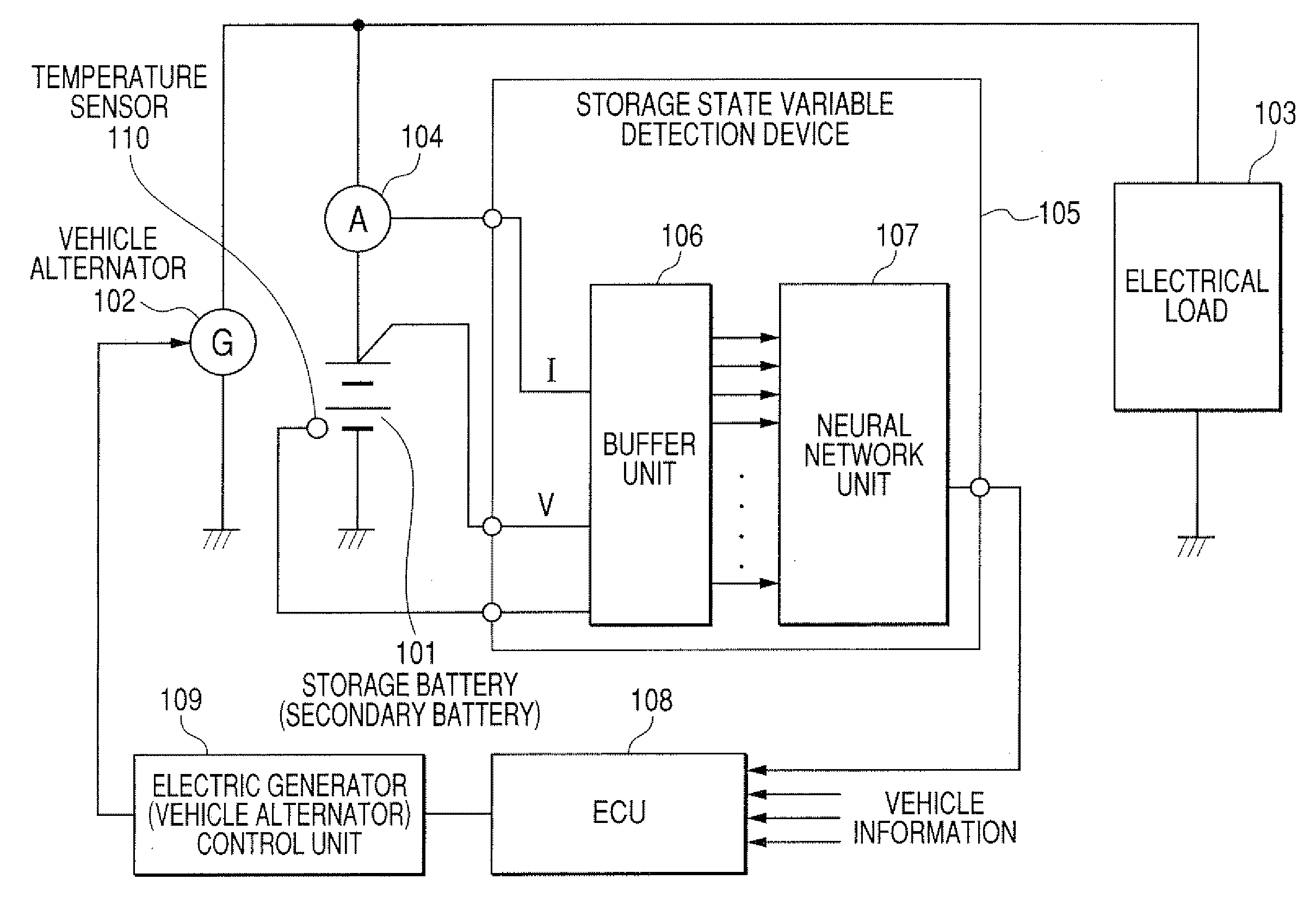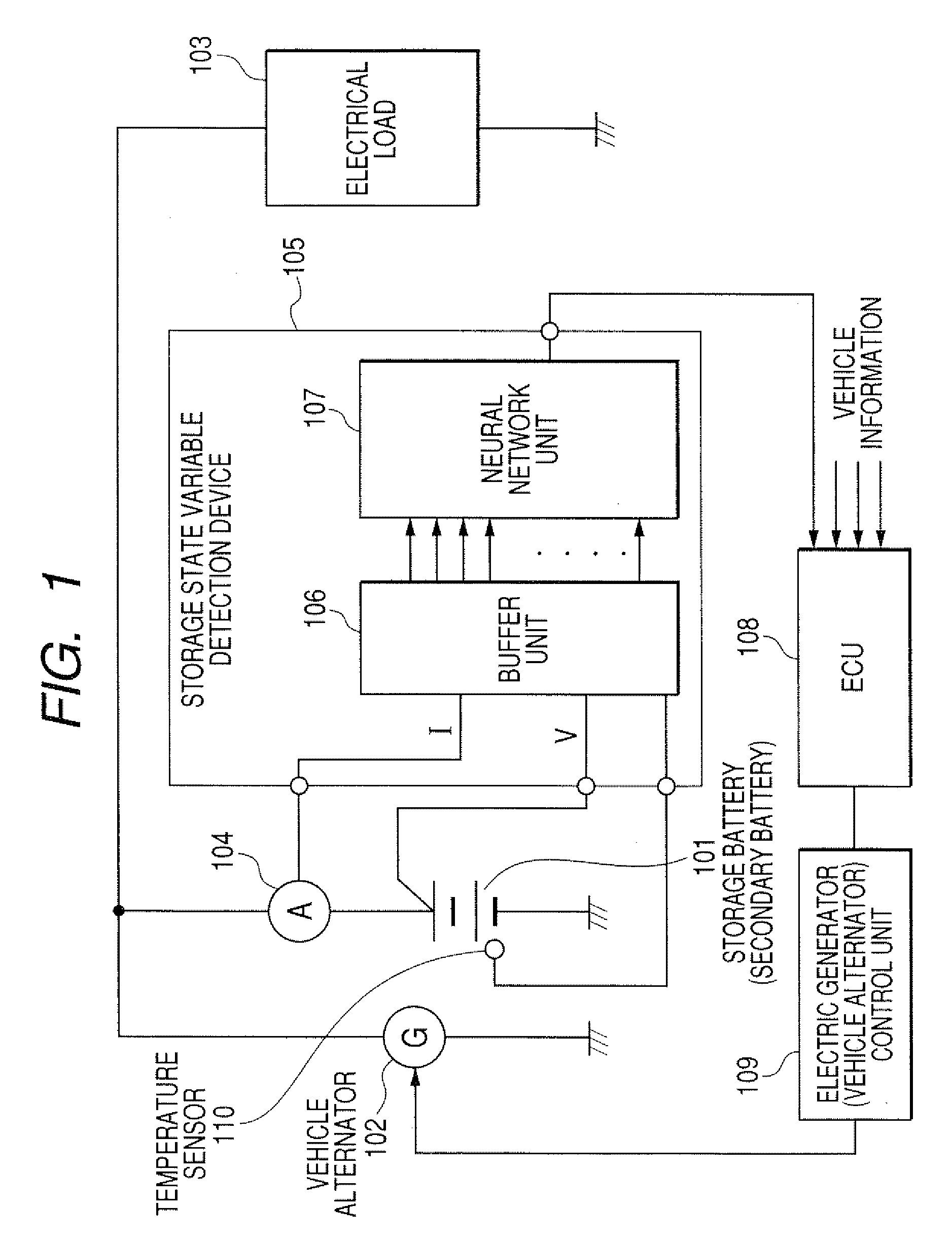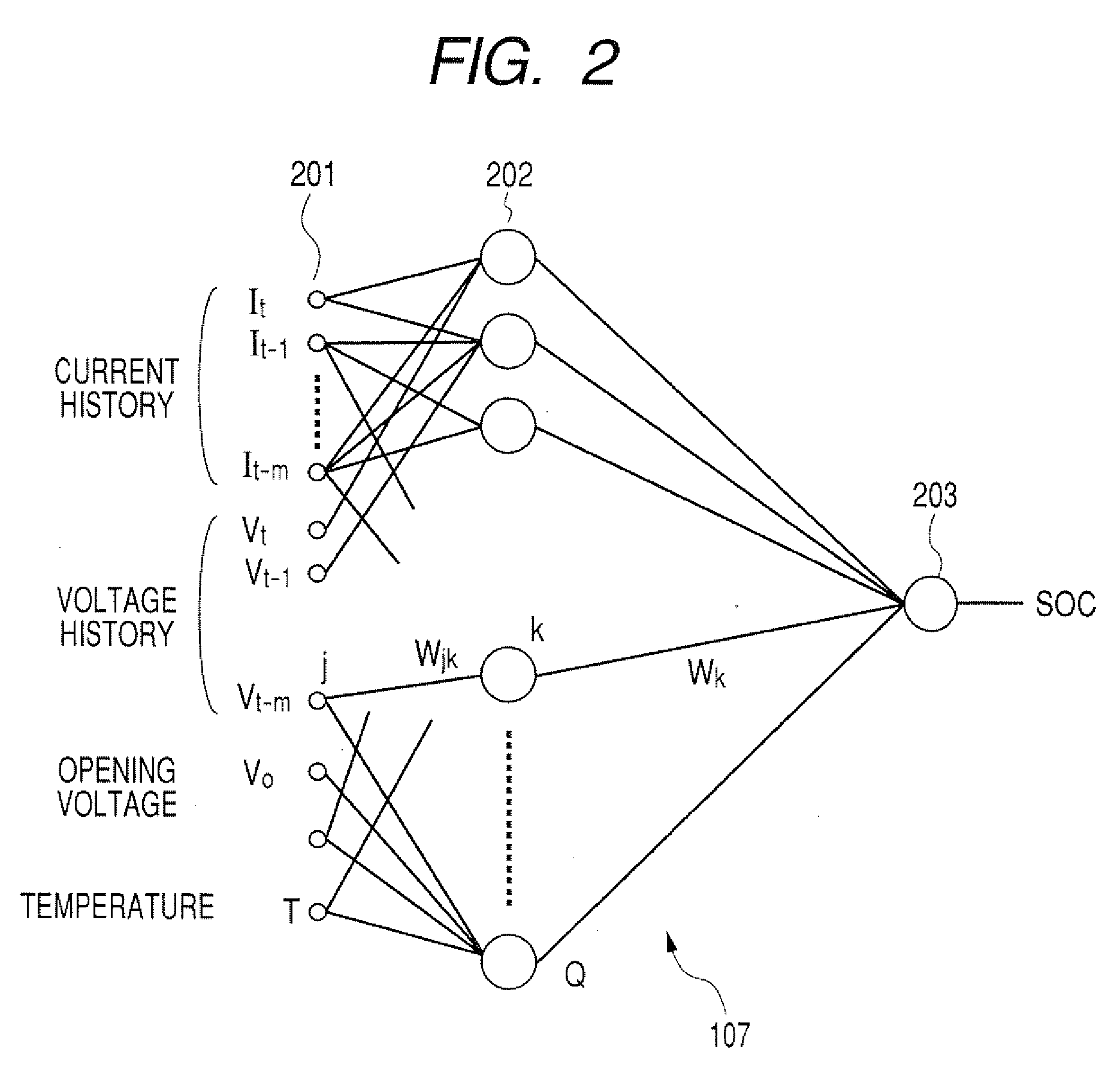Method of calculating state variables of secondary battery and apparatus for estimating state variables of secondary battery
- Summary
- Abstract
- Description
- Claims
- Application Information
AI Technical Summary
Benefits of technology
Problems solved by technology
Method used
Image
Examples
embodiment
[0119]Next, a description will now be given of an embodiment of the learning step by the neural network unit 107 using the true value of the electrolytic solution temperature, a larger temperature value (=true value +10° C.) from the true value of the electrolytic solution temperature, and a smaller temperature value (true value 10° C.) from the true value of the electrolytic solution temperature. In this case, an available real electrolytic solution temperature estimation value is used, like the reference example. Table 2 shows the electrolytic solution temperature as one input parameter to be input into the neural network unit 107 during the learning step in the embodiment. The batteries A, B, C, D, and E in the following Table 2 have a different electrolytic solution temperature in the same storage battery,
TABLE 2ElectrolyticElectrolytic solutionsolutiontemperatureInputtemperatureestimation errorvalueBattery[° C.][° C.][° C.]A−100−10B000C10010D25025E70070*A−10100*B01010*C101020*D...
first modification
(First Modification)
[0128]As shown in Table 2, in the learning step, the neural network unit 107 of the embodiment inputs the temperature true value, the temperature large value, and the temperature small value with a same weight as the input parameters. However, a probability of the temperature detection value, detected by the temperature sensor, near the temperature true value is larger than a probability of the value near the temperature large value or the temperature small value.
[0129]From this point of view, the number of the repeated learning steps for the temperature true value shown in Table 2 is greater than that of the temperature large or small value and input into the neural network unit 107 according to the first modification of the present invention. For example, in the first modification, the number of the learning step for the true value is set three times when compared with that for the temperature large or small value. This can further decrease the temperature dete...
second modification
(Second Modification)
[0130]Similar to first modification described above, as shown in Table 2, in the learning step, the neural network unit 107 of the embodiment inputs the temperature true value, the temperature large value, and the temperature small value with a same weight as the input parameters. However, a probability of the temperature detection value, detected by the temperature sensor, near the temperature true value is larger than a probability of the value near the temperature large value or the temperature small value.
[0131]From this point of view, the second modification has a configuration of the neural network unit in which the input cells in the input layer 201 is composed of a plurality of true temperature value input cells, a temperature large value cell through which the temperature large value is input, and a temperature small value cell for the learning step.
[0132]In the SOC calculation after completion of the learning step, the neural network unit 107 inputs th...
PUM
 Login to View More
Login to View More Abstract
Description
Claims
Application Information
 Login to View More
Login to View More - R&D
- Intellectual Property
- Life Sciences
- Materials
- Tech Scout
- Unparalleled Data Quality
- Higher Quality Content
- 60% Fewer Hallucinations
Browse by: Latest US Patents, China's latest patents, Technical Efficacy Thesaurus, Application Domain, Technology Topic, Popular Technical Reports.
© 2025 PatSnap. All rights reserved.Legal|Privacy policy|Modern Slavery Act Transparency Statement|Sitemap|About US| Contact US: help@patsnap.com



